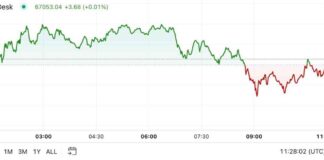BlackRock is exploring the crypto derivatives market by considering the use of its BUIDL fund as collateral on various centralized exchanges, such as Binance, OKX, and Deribit. This move is part of a larger trend of Wall Street firms increasing their involvement in digital asset markets. The BUIDL token, which requires a minimum investment of $5 million and is designed for qualified institutional investors, is already being used as collateral by hedge fund clients of FalconX and Hidden Road.
If BUIDL is accepted on platforms like Binance and Deribit, it could significantly expand its market reach. The crypto derivatives market saw a trading volume of nearly $3.5 trillion in September, which is much larger than the spot market. While BlackRock has not officially commented on this initiative, Deribit CEO Luuk Strijers mentioned that they are considering various tokens, including BUIDL, pending regulatory approvals and a better understanding of the token’s technical aspects.
In a related development, Tether Limited, the issuer of the Tether stablecoin (USDT), is reportedly exploring offering lending services to commodities trading companies as a way to capitalize on their $5.2 billion profit in the first half of the year. Additionally, decentralized finance (DeFi) protocols are looking into incorporating BUIDL tokenized shares into their financial instruments. For example, Aave proposed a new GHO Stability Module (GSM) based on BlackRock’s tokenized fund to help maintain the stability of its ecosystem’s stablecoin, GHO.
Furthermore, Ethena Labs introduced a new stablecoin called UStb, fully backed by BUIDL, as an alternative to their existing USDe stablecoin. This move aims to attract users with a more conservative risk appetite. These developments highlight the increasing entanglement between DeFi and traditional finance, as both sectors look for innovative ways to leverage assets and expand their market presence.
Overall, BlackRock’s exploration of the crypto derivatives market with BUIDL as collateral reflects a broader trend of institutional interest in digital assets. As more traditional financial institutions and crypto-native companies collaborate and innovate, the landscape of finance is evolving to incorporate a wider range of assets and financial products.














